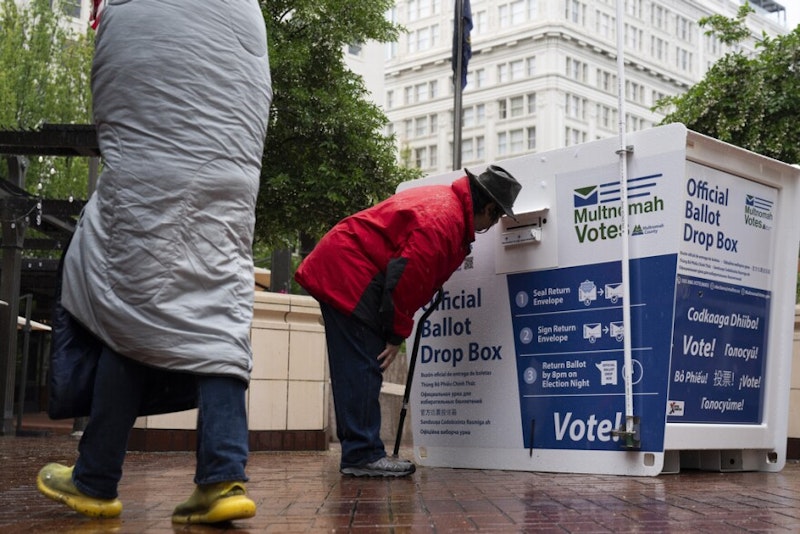A Harris/Walz lawn sign in Portland, OR, the largest city in a state whose eight electoral votes Donald Trump has no chance to win, is a political virtue signal. They’ve started cropping up in the neighborhoods, sending the following message from Democrats and left-leaning progressives: “We know this state is far from the battlegrounds that will determine the outcome of the upcoming presidential election, but we want to make clear that we fully support the Democratic Party ticket, and recommend that you do too.” The subtext of these displays is, We also hate Donald Trump. The last Republican to win Oregon was Ronald Reagan, in 1984.
Despite the inconsequential import of the lawn signs, these people have every right to trumpet—no facetious pun intended—their support. Over in Eastern Oregon, the Trump signs were up in full force in 2016 and 2020, and likely are again. In the rural precincts, the electoral map runs deep-red each year, in perennial futility as the liberal westside Interstate-5 corridor (Portland, Salem, Eugene, Ashland) is home to a winning plurality of people.
You’re never going to see Trump lawn signs in Portland. You’d have to be mad to signal that to the public at large. And why bother? Your reverse virtue signal won’t matter to the election outcome, and might get your home targeted by individuals afflicted with Trump Derangement Syndrome, of which Portland probably has a large share.
Some of the Harris/Walz lawn signs are decorated with small American flags, planted alongside into the turf. Another signal, just in case there’s any question in voters’ minds: Overlook the fact that Harris/Walz is inarguably the most radically far-left ticket in our nation’s history. They—unlike Trump/Vance—are the keepers of the patriotic flame.
I’ve covered Oregon politics from a conservative perspective for 15 years. The right gets some important wins from time to time, particularly in the last cycle with the election of Republican State Representative Lori Chavez-Deremer. More typically, statewide elections come down to some equation of 60-55 percent vs. 40-45 percent in favor of the Democrats. When rural precincts, led by local and regional Republican elected officials, attempt to govern in their own economic or cultural interest, state or federal entities, often invoking environmental impact strictures, often weigh in with an authoritative thumbs down.
Therein lies the vortex of Oregon politics: an insurmountable number of left-wing votes in the population centers—way more than are needed to secure the Beaver State’s Democrat electoral college representation in perpetuity, and a dogged, indefatigable right, battling from the hinterlands for the Holy Grail: freedom from what’s a centralized one-party state government.
Kamala Harris won’t win Oregon by the 16-point margin Joe Biden did in 2020, but she’ll win. There’s nothing stopping Oregon citizens from donating to the Trump campaign, but left on the Electoral College sidelines, Oregon conservatives, Republicans, and right-leaning Independents can only look to the swing states to deny her the presidency.

